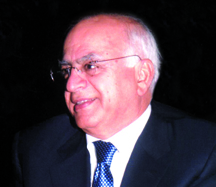Shariati ... man of peace
the iranian intellectual ali shariati, 1933- 1977, is considered one of the best thinkers of the twentieth century in iran in spite of his religious leanings. shariati is also seen by many as one of the ideologues of the iranian revolution led later by ayatollah khomeini. shariati graduated from the faculty of arts and in 1959 was sent by the then shah to complete his studies in france. he received his doctorate in religion and sociology in the history of islam from the prestigious sorbonne university. during his youthful days shariati was a supporter of mohammad mosaddegh and was therefore arrested and persecuted. the regime then thought of sending him to france in the belief he will change but he became more radical and went on to found the ‘guidance husseiniya for youth education’ in 1969 (it is related to the guidance society in kuwait, the old name of the brotherhood movement in kuwait?) but it was shut down. following his arrest, there was trouble on the internal front and had to be released after serving time behind bars for 18 months when external pressure mounted. two years after his release, shariati travelled to london and it appears the british intelligence service was waiting for him. he was found dead inside his apartment a few days after his arrival. he died two years before the iranian revolution at the age of 43. he was buried in damascus. ali shariati left behind a legacy of ideas which contributed to the overthrow of the shah. more than 150 studies were published about him, and in the 1970s, more than 15 million copies of his books were printed according to researcher muhammad esfandiari. shariati himself once said more than 50,000 students enrolled at the university to be taught by him. he sold more than a million copies of his book ‘the rule’. shariati won praise of akbar hashemi rafsanjani (an influential iranian politician, writer and one of the founding fathers of the islamic republic who was the fourth president of iran from aug 3, 1989 until aug 3, 1997) and mustafa jamran, his companion against israel on the lebanese borders. as for sayyid musa al-sadr, (a lebanese-iranian philosopher and shite religious leader from a long line of distinguished clerics tracing their ancestry back to jabal amel) he prayed on his body in damascus. this, and calls for mourning on his death anniversary by al-sadr in beirut prompted the shah’s government to withdraw the iranian nationality of al-sadr. despite shariati’s religious leanings, he was a unique model among iran’s intellectuals. he was critical of extremist religious practices. he also widely criticized the shiite clerics and was considered as one of the few able to distance himself from doctrinal fanaticism and used his power to unite all. he severely criticized what he called ‘the safavid shi’ism’ and ‘the umayyad sunnism’, and called for rapprochement between the two sects. in one of his statements, shariati asked: why do religious clerics ignite sectarianism? in his answer to his question, he said, “because this is the only thing that keeps them in office and helps them to exercise control over the people and exploit them.” have we understood his message? i do not think so.
email:






